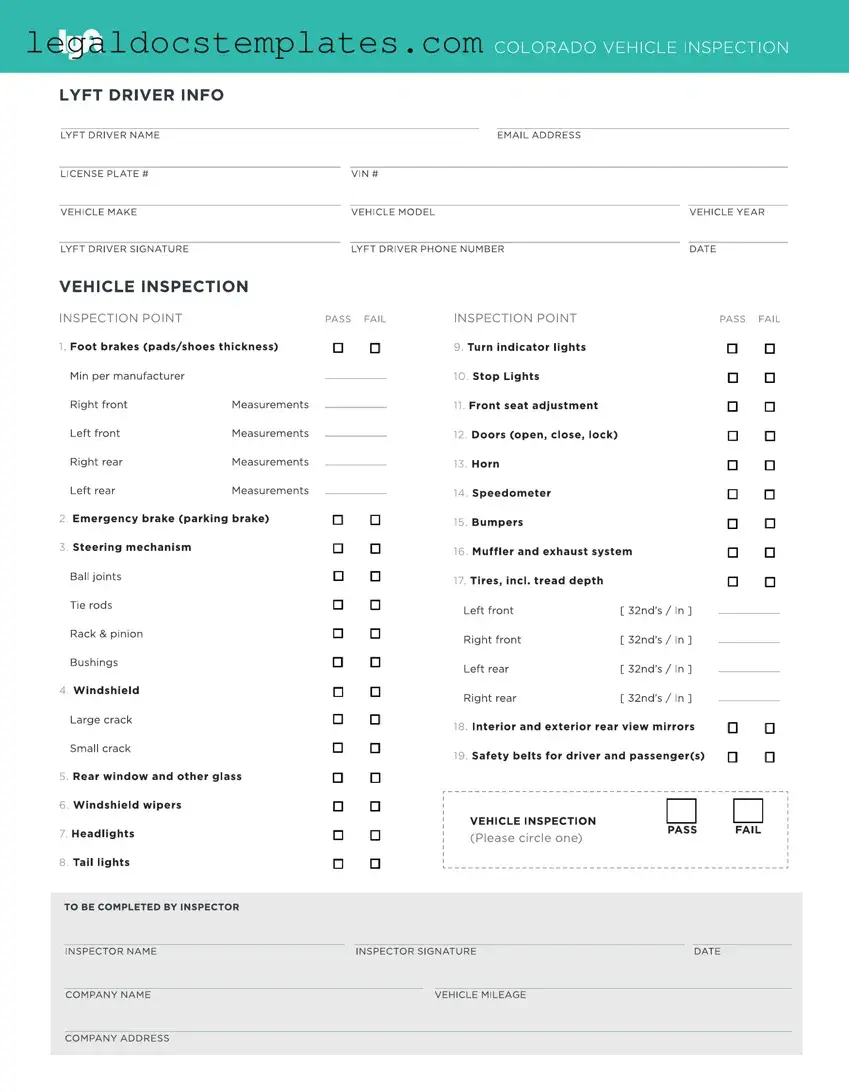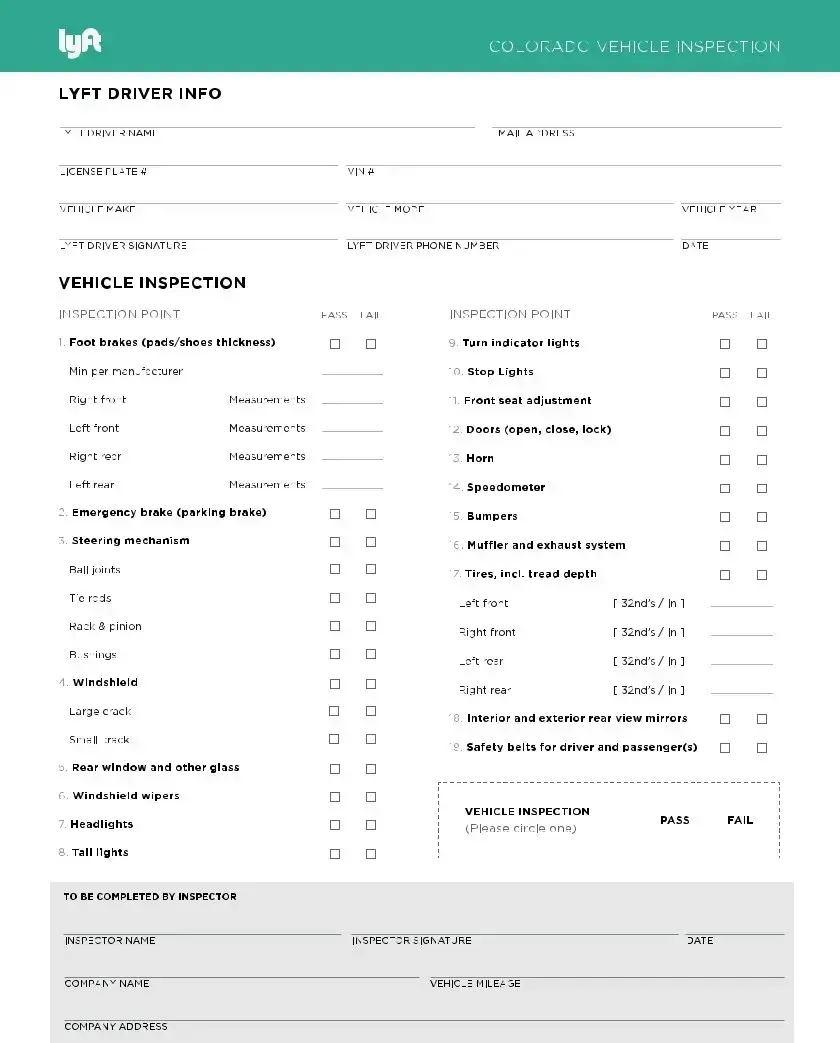The Lyft Inspection form shares similarities with the Uber Vehicle Inspection Form, which is also used to ensure that vehicles meet specific safety standards before they can operate on the Uber platform. Both forms assess vital car functionalities such as brakes, lights, tires, and steering mechanisms, aiming to guarantee passenger and driver safety. Key elements like vehicle age and overall condition are scrutinized to comply with company policies and local regulations, making these documents pivotal for rideshare drivers wishing to offer services through these platforms.
Another document resembling the Lyft Inspection form is the Vehicle Registration Form. While the primary purpose of the Vehicle Registration Form is to document the ownership and legality of a vehicle's operation on public roads, it similarly requires details about the vehicle's make, model, year, and VIN. These details are crucial in both forms for identifying the vehicle and ensuring it meets regulatory and company-specific criteria, although the inspection form focuses more on safety and operational criteria.
The Annual Vehicle Inspection Report, mandated by the Department of Transportation (DOT), also parallels the Lyft Inspection form. This report emphasizes vehicle safety, examining components like brakes, tires, and lights to ensure they comply with national safety standards. Both documents serve the fundamental purpose of promoting road safety, though the DOT report applies broadly to commercial vehicles while Lyft's inspection targets passenger service vehicles.
The Pre-Trip Inspection Checklist used by commercial drivers bears resemblance to the Lyft Inspection form in its approach to vehicle safety. Drivers must perform these checks daily, focusing on the vehicle's operational aspects to prevent accidents and breakdowns. Similarities include inspections of tires, brakes, lights, and other critical safety features, highlighting the importance of vehicle maintenance in ensuring safety for all road users.
A Car Rental Inspection Form, utilized by rental agencies, is akin to the Lyft Inspection form. It documents the condition of a rental vehicle before and after use, focusing on existing damage, functionality of vehicle features, and overall safety. Both forms are instrumental in assessing vehicle condition to ensure customer safety and satisfaction, as well as minimizing liability for the companies involved.
Lastly, the Home Auto Maintenance Checklist shares the proactive approach to vehicle care seen in the Lyft Inspection form. Although primarily used by vehicle owners for personal maintenance tracking, it covers many of the same areas, such as checking tire pressure, brake function, and ensuring lights work correctly. This checklist underlines the significance of regular maintenance in preserving vehicle safety and operational integrity, aligning with the intentions behind the Lyft Inspection form.

